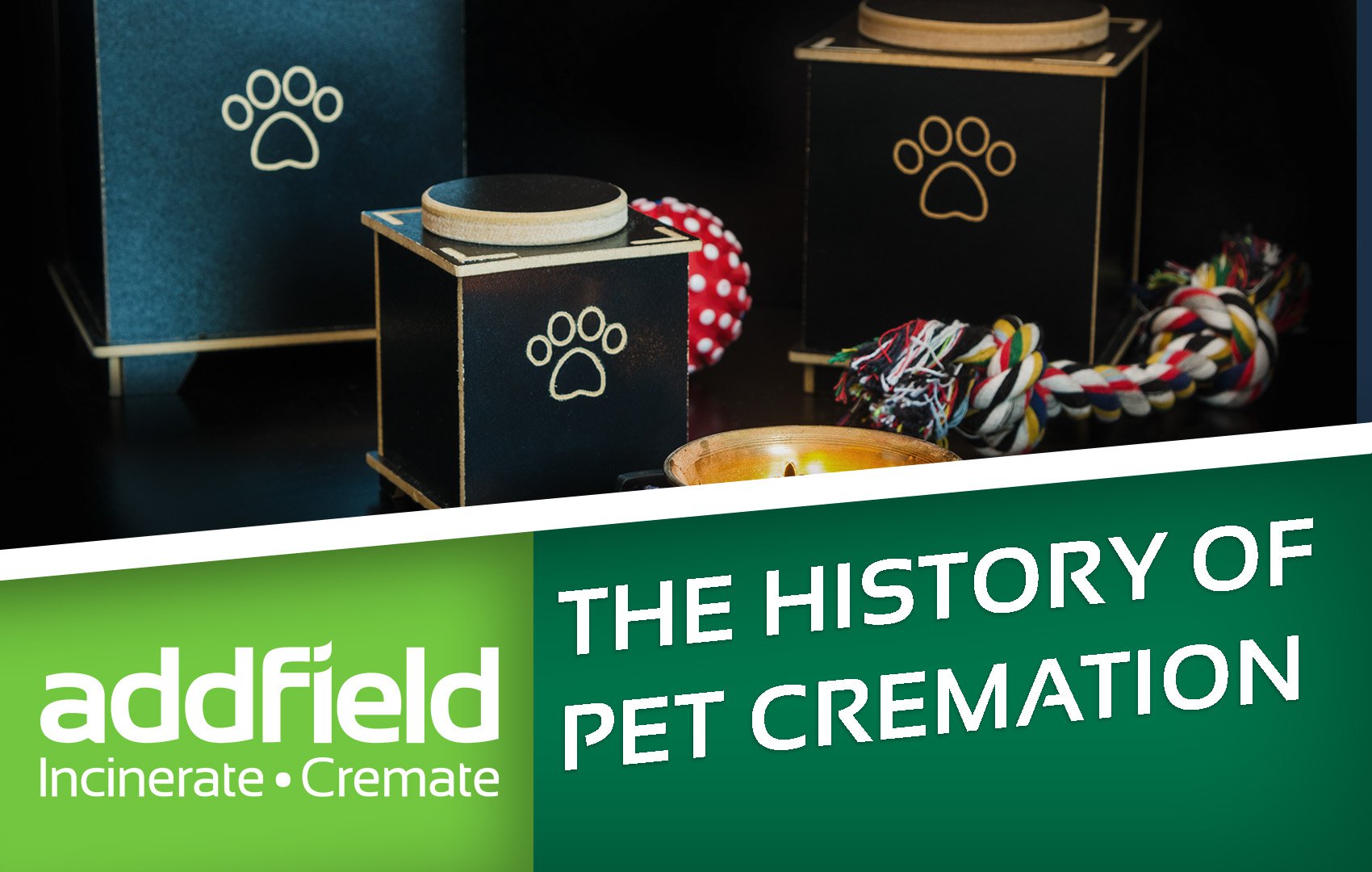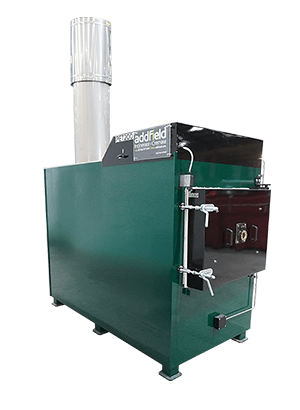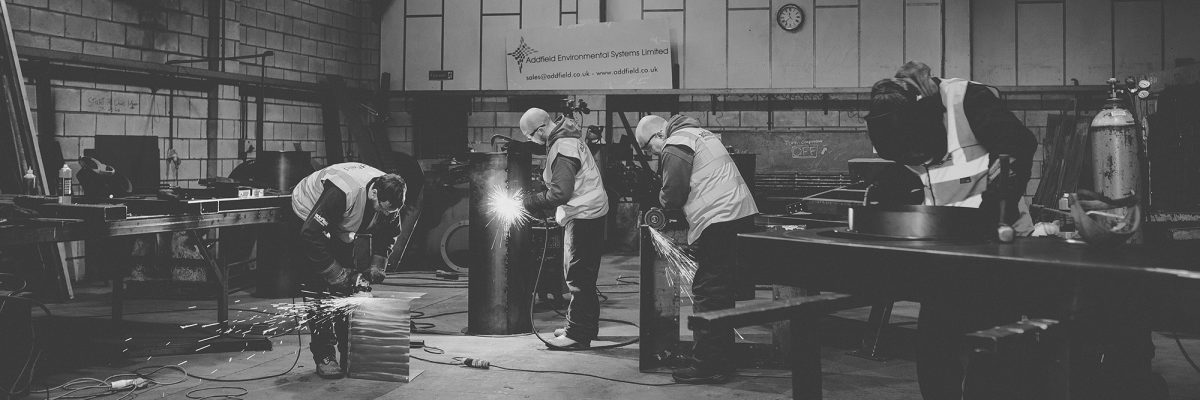
17/07/23
The Complete History of Pet Cremation
For many years we have been supplying Pet Cremation solutions across the world. It is an industry that is continuing to grow. Although now is probably the best time to open up a pet crematorium in terms of operating a successful business, pet cremation is not a new practice. In closer research, it dates back to the dawn of recorded history. As the leaders in the supply and service of pet cremators, we decided it may be a good idea for us to have a close look at the full history, and so here we go, from the Greeks and Romans right up to the latest innovations. If you have any questions at the end, please don’t hesitate to get in touch with us at sales@addfield.com
The popularity of pet cremation as a way to say goodbye to our pets has boomed in recent years. Pet owners seek to honour their beloved animal companions in a dignified and meaningful way. However, the history of pet cremation is a long and complex one, spanning many centuries and cultures. Let’s delve into the origins of pet cremation, its evolution over time, and the current state of the practice in modern society.
It is a modern practice that mirrors human cremation; pet cremation is a process in which a deceased pet’s remains are reduced to ashes by exposing them to high temperatures. This practice has become increasingly popular in recent years as pet owners seek to honour their beloved animal companions in a dignified and meaningful way that dates back to ancient times.
The earliest evidence of pet cremation dates back to ancient times, with the ancient Greeks and Romans being among the first civilisations to practice the ritual. They believed that burning the body of a deceased pet would release their soul and send them to the afterlife. In fact, the Greeks were known to hold elaborate funeral ceremonies for their pets, complete with processions, offerings, and even tombstones. To ancient Greeks, pets were incredibly important to them, especially dogs, due to their hunting abilities, and they would even pay special attention to naming their dog. When they died, they took grief seriously, not afraid to cry or mourn them.
During the Middle Ages, pet cremation became less common as the Christian Church began to hold more sway over European society. The Church viewed cremation as a pagan practice and discouraged its use. Many Christians believed cremation could be a way to refuse the possibility of resurrection. However, some pet owners still continued to cremate their beloved animals in secret.
It wasn’t until the 19th century that pet cremation began to experience a resurgence in popularity. In 1896, Francis Xavier Sweeney opened the first pet crematory in the United States, New York City. Sweeney had been inspired by the cremation of his dog and saw an opportunity to provide a valuable service to pet owners who wanted to honour their pets in death.
Initially met with scepticism and resistance, as many people at the time viewed cremation as a barbaric and disrespectful way of treating the dead. However, Sweeney persevered; over time, his business began attracting more customers.
In the Victorian era, only upper-class households could afford to bury or cremate their pet and even go to lengths to get an elaborate headstone for their furry companions, as many families believed pets had gone further than simply being working pets. They met their owner’s emotional needs.
In the early 20th century, pet cremation began to gain wider acceptance among pet owners, particularly those who lived in urban areas where burial space was limited. Pet cemeteries also began to emerge during this time, offering pet owners a dedicated space to bury their pets in a dignified and respectful manner.
During the 1920s and 1930s, the pet funeral industry experienced a boom, with more and more businesses offering a range of pet-related services, including pet cremation. These businesses often operated alongside traditional funeral homes and provided similar services, including caskets, urns, and memorial services.
However, pet cremation still faced significant cultural stigma throughout much of the 20th century. Many people viewed it as a frivolous and unnecessary expense and preferred to bury their pets in their backyards or pet cemeteries. It wasn’t until the 1980s and 1990s that pet cremation began to gain wider acceptance, as more and more people began to view their pets as members of their families.
One of the key factors driving the rise of pet cremation during this time was the increasing urbanisation of society. As more and more people moved to cities, they found themselves with less space to bury their pets. At the same time, there was a growing awareness of the environmental impact of traditional burial practices, which led many people to seek out more sustainable alternatives.
Today, pet cremation is a widely accepted practice in many parts of the world. Various options are available to pet owners, ranging from communal cremation (where several pets are cremated together) to private cremation (where the pet is cremated alone and the owner receives the ashes). Some pet crematories even offer personalised urns, memorial jewellery, and other keepsakes to help owners remember their beloved pets.
In addition to these practical considerations, the rise of pet cremation was also fueled by changing cultural attitudes towards pets. In the past, pets were often viewed as utilitarian creatures, kept for their practical value rather than for their companionship. However, over time, pets began to take on a more prominent role in people’s lives and were increasingly seen as members of the family.
In addition to the various cremation options available, modern pet cremation also offers a range of additional services designed to help pet owners honour their pets. Some pet cremation services offer memorial services, where pet owners can gather to remember their pets and say goodbye. Others provide grief counselling and support to help pet owners cope with the loss of their pets.
One of the significant benefits of modern pet cremation is the ability to customise the experience to meet the needs and preferences of the pet owner. Pet owners can choose the type of cremation that best suits their needs and can also personalise the urn or keepsake to reflect their pet’s unique personality and traits.
Modern pet cremation has also become more accessible to pet owners, with many pet cremation services offering online ordering and shipping options. This allows pet owners to arrange their pet’s cremation from the comfort of their home and eliminates the need to transport the pet’s body to a physical location.
Another benefit of modern pet cremation is the ability to use technology to enhance the experience. Some pet cremation services offer virtual memorial services that allow pet owners to gather with family and friends to remember their pet, even if they cannot attend in person. Other services offer online obituaries and memorial pages that allow pet owners to share photos and stories of their pets with others.
In conclusion, modern pet cremation has come a long way since its origins thousands of years ago. Today, pet owners have a range of options and services available to them, from communal cremation to personalised urns and keepsakes, with the ability to customise the experience and use technology to enhance the process. From ancient Greece to modern-day, people have been cremating their beloved pets to honour their memory and provide closure in the wake of their loss. While pet cremation may have once been viewed as a fringe practice, it has become an important and widely accepted part of our cultural landscape.
It seems that pet cremation has come a full circle throughout history, being adapted to modern society as the years have gone on, yet still maintaining the same emotional and cultural meaning as it did for the Ancient Greeks and Romans. The process of celebrating a pet’s life and memory is one that is easily accessible for all households due to the availability of pet cremation.
And here at Addfield we continue to support and grow the industry with our highly efficient and environmentally sustainable range of pet cremators.
- British Designed.
British Built. - World leaders in
incineration technology. - Unrivalled build quality
& machine longevity. - Distributed to more
than 150 countries. - Environmentally
Responsible. - Trusted partner, over
40 years experience.




